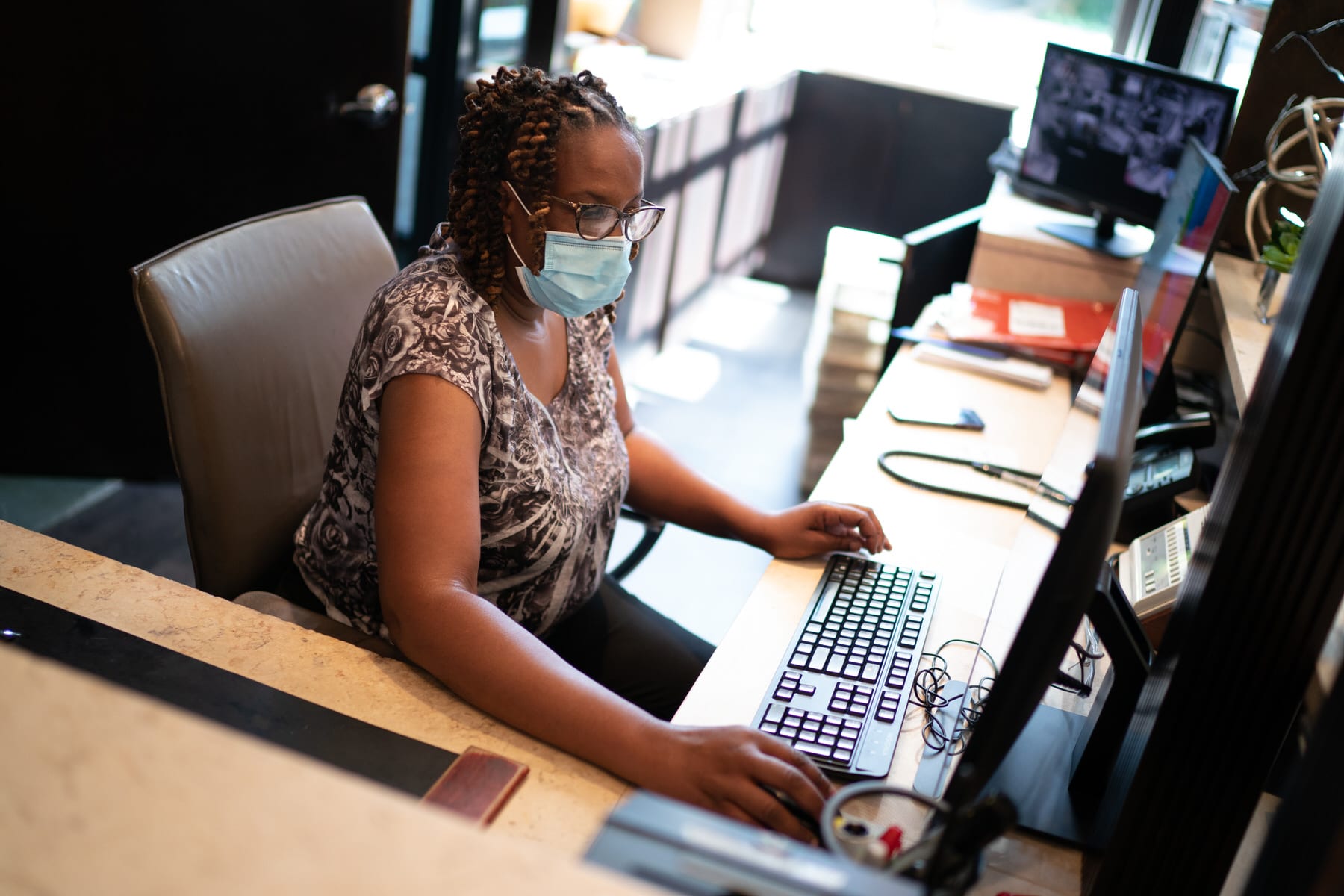The wage gap and barriers to economic mobility have not only set Black women’s advancement back, but also depressed the United States economy by about $507 billion over the past six decades, according to a new report from financial services firm S&P Global.
The report, released Tuesday, found that if educational attainment among Black women had kept pace with White women from 1960 to 2019, the U.S. economy would have generated an additional $107 billion in economic activity. That figure swells to half a trillion if Black women had been in positions that better matched their education and skill sets during that time period.
The research, which breaks down the ways that structural racism and sexism have continuously stymied Black women’s advancement, came as the Senate prepared to take up the Paycheck Fairness Act. The bill, which was first introduced in 1997, would build on the Equal Pay Act of 1963 and the Lilly Ledbetter Fair Pay Act, passed in 2009.
Late Tuesday, Senate Republicans voted to filibuster the bill, rendering it essentially dead in the chamber. The bill passed the House of Representatives in April with only one Republican voting in support.
The legislation would’ve closed wage gaps that are still prevalent for all women but wider for women of color. In 2021, women earn about 82 cents for every $1 White men earn. Black women earn 63 cents, American Indian and Alaska Native women earn 60 cents, and Latinas earn 55 cents compared with their White man counterparts. Asian American or Pacific Islander women earn 85 cents, though that average conceals starker disparities across ethnic groups.
The Paycheck Fairness Act would work to narrow the gap by closing existing loopholes and requiring employers to prove a pay disparity exists for a legitimate reason. It would also strengthen protections by banning employers from asking prospective employees about their salary history, building in more transparency and protecting workers from retaliation.
Opponents argue that gaps exist because of the jobs workers seek. Instead of closing the wage gap, the Paycheck Fairness Act would spur lawsuits against employers from workers seeking higher wages, they argue.
Republican Rep. Virginia Foxx of North Carolina said in a statement last month that “women are making career choices that are best for themselves and their families,” calling the bill “a false promise that creates opportunities and advantages only for trial lawyers looking for easy payouts while causing irreparable harm to employers.”
But S&P’s research points to evidence that decades of persisting income inequality has contributed to wage gaps, slowing household income growth for families of color and making them less able to weather significant economic downturns. During the Great Recession, for example, the number of hours worked by Black women fell significantly and never recovered. During the pandemic recession, which hurt women more than men, Black women had the second-highest unemployment rate of any group — 16.6 percent in May 2020.
Over time, the disparities opened a $12,700 earning gap between Black women and White women by 2019, the report found.
Educational attainment is one factor. Though Black women have been attending college at higher rates — and are more likely than Black men to graduate — they are also more likely to enroll in for-profit colleges that offer more flexible schedules but less competitive career opportunities upon graduation. (Black and Latinx college students are three times more likely to attend a for-profit college as compared to White students, according to a 2018 Federal Reserve study.)
For-profit college students also carry larger debt burdens that follow them into their professional lives: According to a 2017 study by the Fed, 23 percent of students who attended for-profit colleges that year were behind on their loan payments, compared to 9 percent of students at public colleges and 6 percent of students at private nonprofit colleges.
Today, Black women have some of the highest rates of student loan debt of any group, and many college-educated Black women are forced to seek work in low-paying jobs to pay off that burden. Nearly a third of all Black women are employed in service occupations — the field that experienced the greatest losses due to the pandemic. Caregiving is also dominated by Black women. About 40 percent of the home health aide workforce is made up of Black women, as well as 35 percent of the nursing assistant workforce.
“If you have more debt, and you went to a school which may not be rewarded by markets as another school of higher education is, then that person is set back as they enter the workforce,” said Beth Ann Bovino, S&P’s chief U.S. economist and the lead author of the report.
The wage gap, which is informed by the kinds of jobs workers are concentrated in, has therefore remained stubbornly wide because Black women are concentrated at the lower end of the pay spectrum. About 23 percent were in the professional sector in 2019, compared to 31 percent of White women, according to S&P’s report.
All of this while Black women have historically maintained higher rates of labor force participation than White women. Black women’s participation rate peaked at nearly 67 percent in 2019 — 7 percentage points higher than White women.
Now, the pandemic has the potential of widening the existing disparities. Already, White women have a lower unemployment rate while the pandemic is still ongoing than Black women had before the pandemic started, when the U.S. economy was experiencing historically low unemployment rates. Month after month, as the economy has churned toward recovery, women of color have been left behind.
Black women were already far behind — could they be even further behind after COVID-19?
Beth Ann Bovino, S&P Global’s chief U.S. economist
In May, the unemployment rate for Black women was nearly twice that of White women — 8.2 percent compared to 4.8 percent.
“Looking at the monthly unemployment rate comparing it to white women, you don’t have to look at a recession. Black women’s unemployment rate has been above White women every month going back to 1972,” Bovino said. “Our concern is that Black women were already far behind — could they be even further behind after COVID-19?”
Policies proposed by President Joe Biden’s administration could help. The administration is proposing a $400 billion investment in home-based care included as part of its American Jobs Plan that would raise the minimum wage to $15 an hour for home care jobs. A historic expansion of the child tax credit, which already passed in March, will give families up to $3,600 per child for at least the next year, funds that could ease the burden on the 70 percent of Black women who are primary or sole breadwinners in their families.
More recently, the administration announced two initiatives it is taking up immediately that could also help. It’s launching an inter-agency effort to address the inequity in home appraisals that has disproportionately affected Black home buyers, which could clear a more accessible path to homeownership and wealth building after a pandemic that has evicted more Black women than other group. The administration is also looking to increase the share of federal contracts that go to small disadvantaged businesses by 50 percent in the next five years.
To get a better sense of what policy changes could have a material impact on narrowing the wage gap, Bovino suggests the federal government invest in a tool similar to one employed by the Congressional Budget Office in the past to measure “the economic feasibility and accessibility to the workforce for women.” The tool could be a score that helps better equip policymakers to make decisions.
It’s could be costly, Bovino said, but worth it.
Ultimately, policy intervention will be needed to reverse trends that have limited economic growth for marginalized groups, and as a result, everyone else.
“If we want to spur the pace of growth in the world’s biggest economy to its potential, underutilization of our greatest economic resource, labor, is no longer a viable option,” S&P wrote. “Better educational opportunities for Black women is an option. But, true advancement would require breaking down barriers that make it difficult, at best, for Black women to succeed in the American labor force.”
Recommended for you
From the Collection








